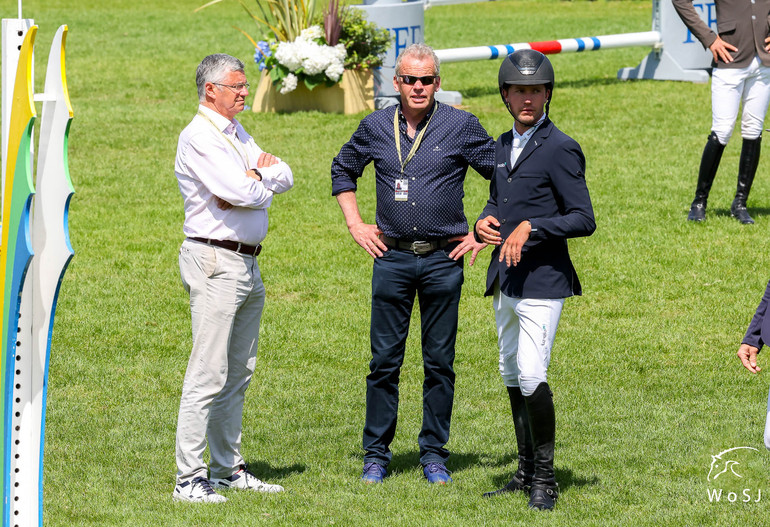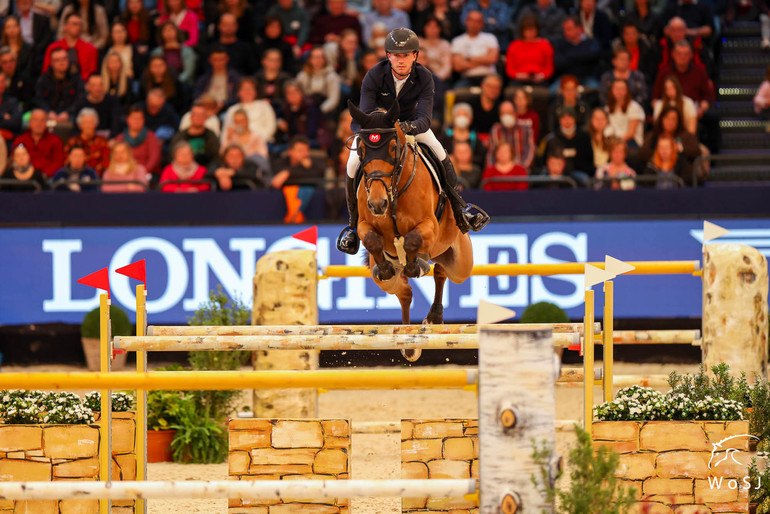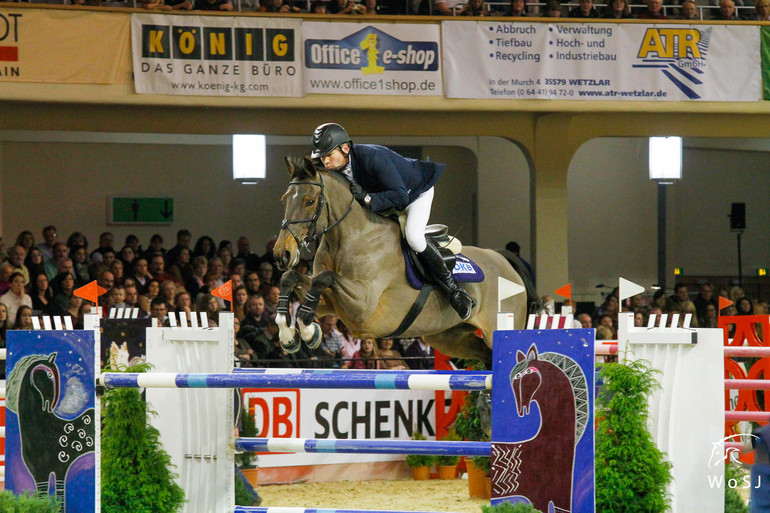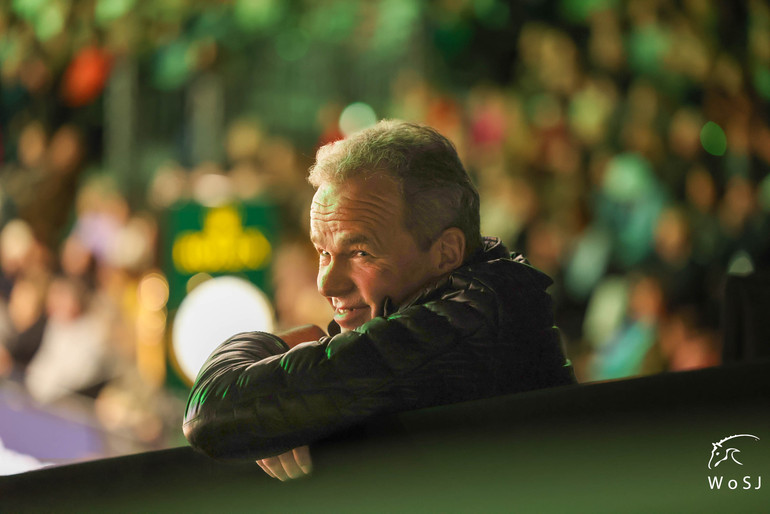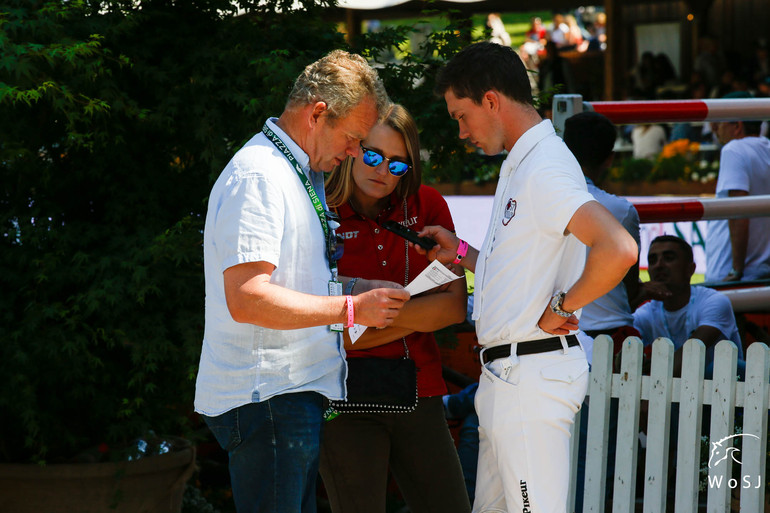Text © World of Showjumping
Lars Nieberg has twice won team gold at the Olympic Games – in 1996 in Atlanta and in 2000 in Sydney – and he also has team gold medals from the World Equestrian Games and the European Championships in his collection. With Nieberg, WoSJ had a conversation about how the sport is losing its basic values, the industry’s rapid changes and the importance of giving horses time.
Time and patience
“With horses, I definitely think it is worth taking your time. The good horses are often special, and vice versa, so you need to be patient – and sometimes it takes a lot of time to get to where you want to go,” Nieberg says. “Quality horses that are extremely careful especially need more time.”
Sometimes you need to wait for years before you can see the light at the end of the tunnel; it is a difficult process, and I think many riders give up too early.
"Either they don’t have the patience, or they don’t believe enough in the horse,” Nieberg says. “I’m of the old school. I learned early on that if you once believed in a horse, you should not give up on it. This is especially the case with young horses that are developing. They can start to grow when they are five or six and get into a bad phase. If you then give up, the next owner will be happy because at one point they will get the best out of the horse.”
“Just look at Ben 431 (Sylvain x Quincy Jones, ridden by Lars’ son Gerrit Nieberg), that first started to show himself as an 11-year-old,” Nieberg points out. “While he was a very difficult horse, I always had the feeling that he wanted it and could do it all, but he was standing in his own way by being over-motivated. Now he is at the stage where he can do anything. He was a horse that we just had to give time and when it comes to that, I can be very stubborn and stay quiet for quite long. Most of the times my feeling is right and with a lot of patience we get to the point that I visualised at the beginning of the process.”
“I have had many horses like this. Lucie 55 (Landadel x Gralsritter, breeder Alfred Feissel Messdorf), that I finished third at the 2005 World Cup Final with, also had a similar journey to the top sport – it took a long time to get her to that level,” Nieberg tells.
“Lucie got into the international sport first at the age of 11, and it even took a few more years until she was really ready. She had some injuries that gave us setbacks, but most of all, she was a horse that needed a lot of trust. When the trust was not 100% there, it didn’t work. It took years to build the trust she needed, but I always had the feeling that I would get there – and I did," Nieberg continues. "Lucie had huge capacity, but was very careful, spooky and a bit sceptical. For a long time, the question was if she would be brave enough, but over time she developed the braveness.”
“Unfortunately, when she finally had made it into the top sport, she sustained an injury. We did one World Cup Final together, but if she would stayed sound, I think she would have been a championship horse,” Nieberg tells. “After her sporting career she had three foals, and today we have her daughter to breed from. She is also a very good horse, but I have let her stay in our breeding program since she was the only mare out of Lucie. With her potential, she should normally have been ridden, but now I instead hope we will get many more fantastic horses out of her. We also have two geldings out of Lucie that we have high hopes for – one of them very similar to her and will also need that extra time.”
All about the money
“If you compare the money that you could win back in my time, with the prize money today, it was nothing,” Nieberg smiles. “For about ten years, I was almost constantly within the top ten on the world ranking and if I had a really good year I had won between 300.000-500.000 Euro. The riders today laugh about it – they can earn the same money over one or two successful weekends. But back then, there were only three shows where you could win a bit of money and it was Monterrey, Calgary and Aachen, where you had to compete against all the other top riders that all got together for the same shows. If you won 500.000 Euro one year, you were really good and definitely within the top ten – that is not how it is today.”
“The attitude was also different back then, and the sport has definitely changed. Nations Cups were the most important for the riders, but today many don’t even want to participate in those as it is always a LGCT show somewhere where a lot of money can be won. For sure it is good for the riders and owners that you can win more money, but on the other hand that has also made the horses way more expensive,” Nieberg says.
“This does benefit people like us though, as breeders and developers – we don’t buy a horse for two millions,” Nieberg says. “We get 25-30 foals a year and we tend to keep them until they are at least three years old. When they are three, we let them free jump a couple of times and mostly we start them up under saddle before I sort out a few. Most of them are still in our stable as five- and six-year olds – or even longer. I really enjoy the breeding; I live for it and obviously also from it.”
However, while businesses like mine benefit from this development, it makes it really difficult for riders that come from normal backgrounds to find a way into the sport.
“I come from a background where I had more or less nothing, but with a bit of talent and hard work I worked my way up. Today, that is almost impossible – you need to have a background where your family or relatives support you, or get sponsors at a very early stage. In the past, you could work your way up and then horse owners and sponsors would come to you. How will someone without the right background, or money, have a chance to enter the spotlight today?” Nieberg asks.
Losing the basic values
“For my son Gerrit it only works because I somehow manage to find good horses and have some connections so he can jump at the better shows. Not everyone has these connections, and today you need either this or money – it is really a shame,” Nieberg says.
“Most younger riders today are supported by their parents, which makes them less motivated than we were back when I started. We had nothing when I grew up, and the only way for us to someday get money was to develop the horses. My siblings went to the university, and I thought my best chance was through riding – thanks God it worked!”
“Our kids Gerrit and Max obviously grew up under different conditions. For me it has been important to teach them that they must work for what they want,” Nieberg points out. “That is not always the case. I once had a student that rode on the national team with his ponies, and we quickly found out that he couldn’t even put a bridle on because his mum had always done it for him. How will you get a feeling for your horse if you don’t even know how to make it ready? The youth can have thoughts about bits and hind boots, but they don’t know how their horse feels or moves."
It is no longer about learning to ride or learning how to care for and connect with your horse, it is only about ribbons and money. We are losing the basic values of our sport.
No one wants to do the work anymore
“This is also the reason why we in Germany have problems with the education of young horses – no one wants to do that work anymore,” Nieberg says. "Most riders are fantastic in jumping a course, and they can jump bigger classes, but if you put them on a 3- or 4-year-old, they look like beginners.”
“For me, the most important with young horses is to give them time. And to have the horses in a good balance so they can build the right muscles,” Nieberg continues.
If you do that proper when they are young, you will not need a lot of bits and boots when they get older – everything will be a bit easier.
“Many seem to think that as long as the head is down, everything is fine. But where the head is, is really not important. The importance is that the horses put their weight on active hind legs and work through their back – the head will find its position all by itself,” Nieberg says. “If the head is down, but the hindlegs are not doing their job, you will get into trouble. Then you never will be able to get the positive tension you need ahead of a jump. For example, most Americans don’t care at all about the head of their horses and canter towards the jumps with the head up – still the horses are collected and elastic and can do their job splendid. Way too many riders are just focused on the head, and when they can’t get the head down with normal reins, they put on extra reins or something else to force the head down – that will definitely not make it better.”
21.3.2023 No reproduction of any of the content in this article will be accepted without a written permission, all rights reserved © World of Showjumping.com. If copyright violations occur, a penalty fee will apply.



